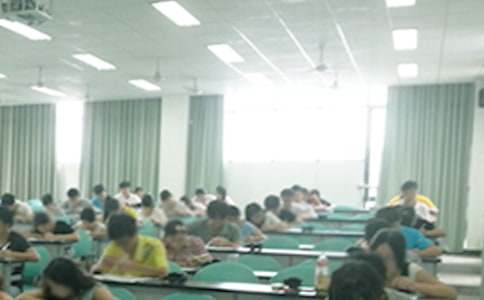- 相關(guān)推薦
2017托福考試的寫(xiě)作技巧有哪些
托福綜合寫(xiě)作,綜合寫(xiě)作是托福寫(xiě)作板塊中的其中一項(xiàng)。托福考試的寫(xiě)作部分分為綜合和獨(dú)立兩塊,這兩塊分別獨(dú)立評(píng)分,取平均值后得到最終的分?jǐn)?shù)。那么托福考試中的寫(xiě)作有什么技巧呢?下面一起看看吧!

托福寫(xiě)作四大評(píng)分標(biāo)準(zhǔn)
新托福寫(xiě)作是考試的最后一部分,包含兩道試題,一篇綜合寫(xiě)作(Integrated writing),一篇“獨(dú)立寫(xiě)作”,需在大約50分鐘內(nèi)完成。熟悉和理解新托福4大評(píng)分標(biāo)準(zhǔn)是高分關(guān)鍵,下面我們就來(lái)看一下這幾個(gè)評(píng)分標(biāo)準(zhǔn)。
評(píng)分標(biāo)準(zhǔn)1:effectively addresses the writing topic and task。
托福寫(xiě)作要求考生有效地闡明主題,考生千萬(wàn)不要跑題。一般來(lái)說(shuō),考生全部跑題現(xiàn)象較少,但是局部跑題現(xiàn)象十分嚴(yán)重,這也是考生不能輕取高分的緣故。
評(píng)分標(biāo)準(zhǔn)2:well organized and well developed
邏輯條理清楚,發(fā)展充分。每次托福寫(xiě)作中作者在講寫(xiě)作時(shí)總是把它和閱讀相對(duì)照。各位考生要想拿到獨(dú)立寫(xiě)作滿分必須真正理解“八股文”的結(jié)構(gòu),千萬(wàn)不要寫(xiě)中國(guó)式的“八股文”,而應(yīng)寫(xiě)出“美式八股文”。
評(píng)分標(biāo)準(zhǔn)3:uses specific details and examples to support you view
考生的論據(jù)一定要具體、明確,且對(duì)論點(diǎn)有支持作用,而不能空洞和泛泛而談。
評(píng)分標(biāo)準(zhǔn)4:displays language facility by demonstrating syntactic variety, word choice and idiom。
通過(guò)譴詞造句和習(xí)慣表達(dá)來(lái)展示語(yǔ)言的熟練程度,這一點(diǎn)是各位考生經(jīng)常忽視,迷惘和不清楚的一點(diǎn)。新托福寫(xiě)作占總分120分的30分。我們對(duì)大家的要求是在作文上花的時(shí)間既要少又要拿高分,至少28分。凡是想拿到28分甚至滿分以上的同學(xué)一定要注意此項(xiàng)評(píng)分標(biāo)準(zhǔn)。能用first千萬(wàn)不要用firstly,能用finally千萬(wàn)不要用last but not least. 不少同學(xué)花了很多功夫背這一外國(guó)人都不用的詞組,能用常用的詞千萬(wàn)不要用偏詞,同時(shí)我們要熟練掌握ETS喜歡的5大語(yǔ)法結(jié)構(gòu)和2種從句。
對(duì)于托福寫(xiě)作的建議是不要寫(xiě)得太多,而要認(rèn)真寫(xiě)上幾篇,再讓老師或?qū)<規(guī)兔π薷模苊庠俜割愃棋e(cuò)誤。同時(shí)也要注意邏輯清晰,語(yǔ)言簡(jiǎn)潔,求精而不求量。
托福滿分作文
Do you agree or disagree with the following statement? Does modern technology help students learn more information and learn it more quickly?
Marvelous as it looks at first sight, modern technology does not help students learn information at a greater speed and with higher efficiency in most cases; or it could work towards the opposite direction which led students to lose their initiative to learn and explore.
First of all, one property of modern technology is latently harmful to any learning mind – it distracts. One thing we feel about when we are searching for information online is that the internet, as an outstanding example of modern technology and even regarded as the innovator of education, provides us with not only relevant results to make use of, but also external links to click. More than once I turned on my computer to check school library for resources, but ended up watching Youtube videos. In this case, computer as a representative of modern technology plays a negative role in learning information. We do acquire more information with the convenient tool, yet most of them are irrelevant and in the end procrastinating would lower our learning.
Also, students would easily become disoriented in the huge sea of information. Although modern technology could equip us with easy access to information, the huge amount of resources would actually leave us discombobulated. Therefore, it is only we possess information more quickly rather than we learn it more quickly. An illustrating example is my experience with a HK digital library which stores almost all the books I desire. At first I enjoyed downloading them from the database, however, one month later I ended up with hundreds of books stored in my hardware yet none of them finished or ever clicked.
Furthermore, modern technology gives students an illusion that information and real knowledge is easy to learn – just by clicking mouse or watching videos. But in fact this forms only the first step towards useful information and effective learning, as learning of any kind requires full concentration and interactive thinking, which are almost absent in the process of popular E-learning experience.
To summarize, modern technology does not help students learn more information and learn it more quickly, though it does make access to information and resources much more easily. The popular e-learning still lacks the concentration, depth, and interaction that are the hallmark of traditional ways of educating and learning.
【托福考試的寫(xiě)作技巧有哪些】相關(guān)文章:
托福考試的技巧有哪些03-10
商務(wù)公文寫(xiě)作技巧有哪些04-03
高中英語(yǔ)寫(xiě)作技巧有哪些03-19
托福考試需要攜帶哪些物品03-08
新托福考試內(nèi)容包括哪些03-07
紅茶有哪些03-10
洋快餐有哪些01-24